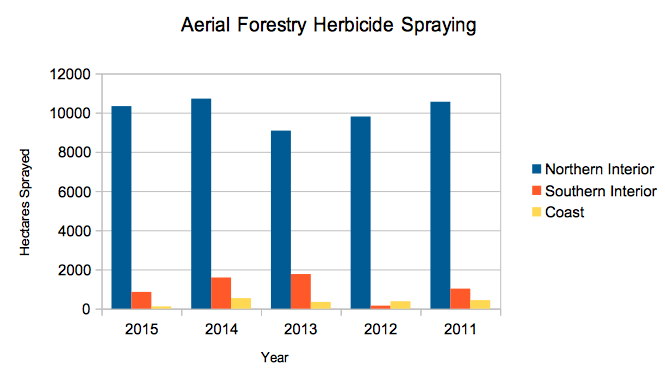In British Columbia the vast majority of chemical herbicide spraying is carried out in Northern British Columbia:
Modern industrial forestry that seeks to eliminate species diversity in the name of efficiency and accelerated productivity of one or two conifer species is not limited to the Central Interior of British Columbia. It is widespread across North America. New Brunswick, the American Northwest, Ontario, and Alberta also see significant herbicide spraying and brushing programs.
Recently in Oregon, a video showed workers getting regularly sprayed by an unknown cocktail of herbicides. This comes two years after a number of residences were sprayed in Curry County,with dozens getting sick. Efforts to get a 100 foot buffer zone around schools and homes have so far failed, and spraying is allowed right up to private or public property. Oregon sprays around 40,000 hectares every year.
“The Drift” : A short film about the sickening of an Oregon community from forestry herbicide overspray.
New Brunswick sees a significant amount of vegetation management as well, leading wildlife scientists to condemn the practice. Groups such as the Conservation Council of New Brunswick and Stop Spraying New Brunswick are calling for an end to it .
The problem is widespread in Ontario, where extensive herbicide spraying to create plantations has eliminated many game and wildlife First Nations rely on.
Recent research has shown that conifer plantations in New Brunswick have less biodiversity relative to mixed, older growth stands.
Recently the World Health Organization concluded that the main herbicide used in forestry is “probably carcinogenic.”
Herbicide spraying is part of a larger problem of over-industrialization of forestry and over-harvesting, impacting many species including caribou.

